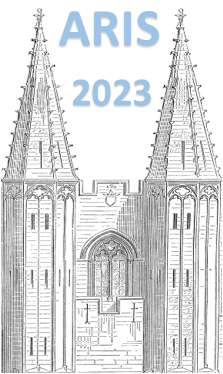Orateur
Description
The diversity of atomic nuclei is enormous: the number of possible species is estimated to be 7000 while we know that adding a single nucleon to one nucleus can dramatically change its properties. This diversity renders nuclear structure interesting in itself, but it is also crucial to the progress in several other fields of research: from searches for beyond-the-standard-model physics to the chemistry of (possibly long-lived) superheavy nuclei. The need for nuclear data is particularly large in astrophysics: answering fundamental questions about the Universe (What is the origin of the elements? What is the composition of the core of neutron stars?) requires data on many properties of thousands of nuclei at the extremes of isospin, temperature and angular momentum.
Since exotic nuclei are hard to produce and handle, the only realistic way to provide all required nuclear data is nuclear theory. To maximize predictive power, models should incorporate as much of the relevant physics ingredients as current computers can handle while describing the maximum number of properties simultaneously with a limited number of parameters. Models based on energy density functionals (EDFs) offer an attractive compromise: starting from an effective interaction they rely on the mean-field approximation to render the many-body problem tractable and can provide a microscopic description of all relevant quantities in terms of individual neutrons and protons and a modest amount of parameters across the scale of the nuclear chart. The success of EDF-based models is largely due to spontaneous symmetry breaking: by considering deformed configurations, these models can account for large parts of the effects of nuclear collectivity at the mean-field level.
In this contribution, I will introduce the recent EDF-based models constructed in Brussels: the BSkG-series. Fitted to over two thousands binding energies, they all achieve a root-mean-square error on the known masses of less than 800 keV which is competitive with simpler models. What sets the BSkG-series apart from other large-scale models based on EDFs is the sophistication of their representation of the nucleus: a three-dimensional coordinate representation results not only in a well-controlled numerical accuracy but also allows us to exploit the power of spontaneous symmetry breaking fully. All BSkG-models allow the nucleus to explore triaxial deformation, while the most recent ones also allow in addition for (i) non-zero angular momentum in the ground-states of odd-mass and odd-odd nuclei through time-reversal breaking and (ii) reflection asymmetry, i.e. octupole deformation.
I will discuss the performance of the BSkG-models for a diversity of (pseudo-)observables relevant to nuclear structure and astrophysical applications: from bulk properties such as masses, charge radii and deformations to the large-scale description of nuclear fission; from fine-grained aspects of ground states such as moments of inertia and magnetic moments to statistical properties such as nuclear level densities. Throughout the presentation, I will explain the impact of spontaneous symmetry breaking and underline its importance to achieve a state-of-the-art simultaneous description of all these quantities. Finally, I will discuss ongoing refinements of these models and the challenges we intend to tackle in the long run.

